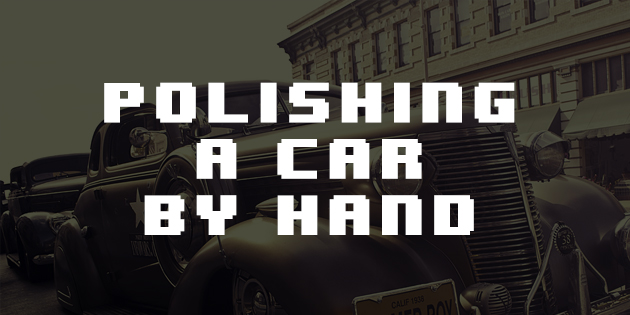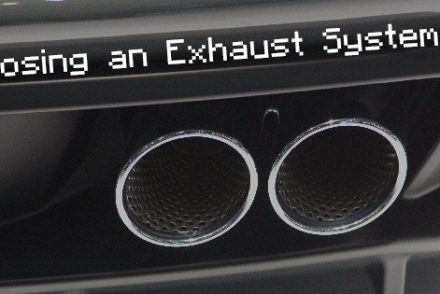Keeping your car’s paint looking like new by periodically using polishing compounds is a sure-fire way to maintain its resale value, but the downside of using polishing compounds is that it can often damage the paint to the point where only a complete re-spray can save it.
Using polishing compounds to their best effect requires some knowledge of what these compounds are, how they work, and what can be expected from their use.
The first thing to understand about polishing compounds is that they cannot perform miracles. There is a limit to what can be achieved with polishing compounds, and in some cases, the best that can be hoped for is to reduce the appearance of blemishes.
In this guide we will explain how to apply polishing compounds by hand to achieve the best possible results when you are looking to restore or revive the paint on your car.
For a practical demonstration on how to effectively use polishing compounds by hand, watch the video below.
What are polishing compounds?
Polishing compounds is a generic term for a wide range of products that are designed to remove surface, as well as sub-surface defects from a car’s paint.
It should however not be confused with cutting compounds that contain larger abrasive particles.
As a rule, polishing compounds contain abrasive particles that are about the same size as talcum powder grains. By applying a polishing compound with a light pressure, the abrasive particles remove the top-most layer of clear coat, and with it, shallow imperfections such as scratches, swirl marks, and damage caused by acidic substances such as bird droppings and dead bugs.
However, even though the clear coat on most vehicles is twice as thick as color coats, it is still only about 6 to 8 thousandths of an inch thick, and it is recommended that no more than around 25% of the clear coats’ thickness be removed over the life of the car.
Removing more can start to influence the integrity of the underlying coats of paint.
How do polishing compounds work?
Ideally, polishing compounds should be applied with a proper buffing machine, but it is nevertheless possible to achieve great results applying it by hand, although it requires some effort and a lot of patience.
At issue is the fact that the abrasives in the compound needs to be broken down to work, and this is best achieved by using a machine.
“Broken down” in this context means that the abrasive particles need to be moved around between the applicator and the surface to abrade the surface until the edges of the particles are rounded off to the point where they no longer abrade the surface.
In practice, when a polishing compound is applied the compound scratches the surface, but as the abrasive particles wear down, the initial scratches are removed by the particles as they get progressively smaller and more rounded off. Thus, hand application often do not break down the particles sufficiently to remove the initial roughness imparted by the compound, with the result that the finish is often less than satisfactory.
From the above it should be clear that achieving a professional result if the compound is applied by hand requires a lot more effort than using a machine to break down the abrasive articles in the compound.
However, persistence, patience, and the correct technique can produce comparable results.
How to use polishing compound to polish a car by hand.
In this section we will discuss the practicalities of using polishing compounds without the benefit of a buffing machine. However, the first, and most important consideration to keep in mind when polishing a car is not to add to the damage, so we recommend that you follow the steps outlined below closely to avoid this happening to you.
You will need the following:
- Polishing compound
Polishing compounds are not created equal, so it is always best to use the compound with the smallest abrasive particles first.
For instance, if you only want to remove minor swirl marks, use a compound that is made for the purpose. Deeper scratches and blemishes will require a coarser compound, so assess the level of damage first before you buy a compound that could cause more harm than good.
- Purpose-made applicator
Not all applicators work with all compounds, so get the applicator that is recommended by the manufacturer of the compound you are going to use. Avoid the use of bath towels and ripped-up T-shirts to apply polishing compound because these materials could leave swirl marks that may be impossible to remove.
- Micro-fiber towels
Micro-fiber towels are great to remove the broken-down compound, since they lift all of the residue from the surface cleanly.
- Spray bottle
Polishing compounds work best when both the surface under treatment and the applicator are slightly dampened with clean water. Spray bottles with a trigger are an excellent means to apply small amount of water to the applicator, without having to dunk the applicator in a bucket of water.
Now that you have everything you need ready at hand, you need to properly prepare the paint surface to get the best results. Here is how to do it.
Step 1- Wash the car.
It is crucially important to remove all dust, sand, grit, and grime from the paint before you start the polishing procedure.
Just one grain of sand can scratch right through the clear coat, and sometimes even through the underlying color coat, so make sure the car is clean, perfectly dry, and free of anything that could scratch the paint.
Step 2- Make sure the surface is cool.
Make sure the surface cool by washing the car undercover, or in a shaded area.
Also make sure that there is no tree sap or the remains of dead bugs, tar, or other contaminants on the car. Remove all of these substances before commencing the polishing procedure.
Step 3- Apply the polishing compound.
During this step it is important not to apply the compound all over the car in one go.
Instead, place a little compound on the applicator, slightly dampen the applicator with water, and don’t work on an area that is bigger than say, 2 feet by 2 feet at any one time. Apply a light pressure, and move the applicator in all directions to ensure an even action by the abrasives on the paint surface.
NOTE: It is often said that swirl marks are the result of applying polishing compound in a circular motion.
This is not true- what happens is that any point in a linear scratch can reflect light in all directions, giving the appearance of circular swirl marks. In highly diffused light, circular swirl marks disappear, and close inspection will reveal fine scratch marks that are randomly distributed.
Swirl marks that appear to be circular are often more noticeable on darker colors because of the way some darker colours reflect light. To avoid swirl marks, apply the compound in all directions evenly, because polished surfaces only shine because they reflect light evenly in all directions.
By applying the compound in one direction only, you prevent light from being reflected evenly, which will leave you with visible, and apparently circular swirl marks.
Step 4- Remove broken-down compound.
Some compounds will become invisible when it is sufficiently broken down. Others will change color, and still others will turn into various shades of white. This depends on the formulation of the compound, but in all cases, the packaging will provide guidance on when to remove the compound.
Use a micro-fiber towel to wipe the area clean, and check the completed are to assess the result. It may be necessary to repeat the process on that area to remove all imperfections.
Step 5-Move on to the next section.
Assuming that the result of polishing the first section is satisfactory, repeat Steps 3 and 4 on the next section, but be sure to keep the area under treatment to a manageable size. Compare the second section to the first, and re-apply compound until both sections show the same level of shine.
Repeat this process over the entire car until an even shine is achieved. Be aware though that to polish a car by hand properly can take several hours, and even then it may be necessary to re-polish some sections and panels to get an even shine.
One more thing…
Polishing compounds only work on multi-layer paint systems, where the clear top coat can be abraded to remove minor blemishes. On older cars, say those built before the late 1980’s, the paint often consisted of a single color coat, without the benefit of a clear top coat to protect the color.
Polishing compounds can easily cut right through the paint on these cars. Therefore, If you are looking to restore a classic car, do NOT use any sort of abrasive material, but seek professional advice on the best way to restore the paint if you are not going to repaint the car.



No Comments